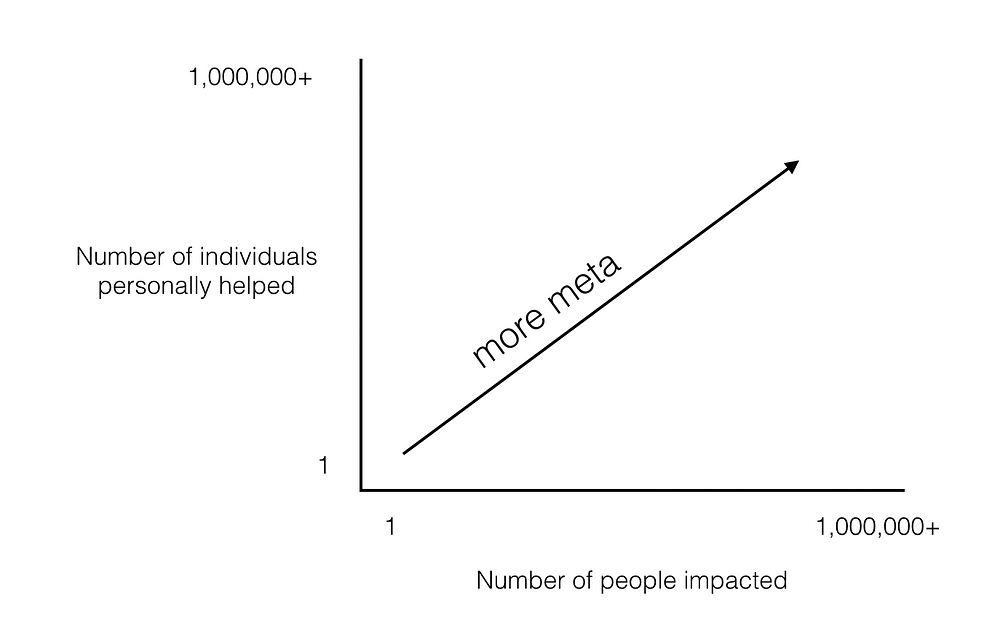As one trained in geography, biology and the fine arts, I look at potential investments from a viewpoint which often differs from analysts who received their training in business schools. In this post, I would like to address a few aspects of "scale" and "scalability". The concepts are fairly simple on the surface. In later posts I may expand upon some of the following basic concepts and also, expand the discussion to include more dimensions of "scale".
Impact
The following diagram was advanced by an entrepreneur who screens potential ideas by their potential to make a difference. It is elegant.
The products and services of great enterprises have a global impact. Tremendous profits can be achieved by investing in these beasts in their early stages i.e. Google, Microsoft. It is extremely difficult to identify these opportunities, especially as the companies often have far-out, ground-breaking concepts which are unappreciated in the early going e.g. distribution models used by Fedex, marketing and distribution by Amazon etc.
This is a tremendously powerful idea. When searching for investment ideas, it often pays to push away from the table and think at a very high level. This process often takes years; however, the "view" that emerges from such thinking can be extremely powerful. Hint: don't look to think tanks and the bleatings of "futurists". Look to the artistic community and outliers in society as these elements are often extremely sensitive to changes in the human condition.
Scalability
Thank Heaven for Wikipedia! Here is a very succinct overview of "scalability".
Scalability can be measured in various dimensions, such as:
Administrative scalability: The ability for an increasing number of organizations or users to easily share a single distributed system.
Functional scalability: The ability to enhance the system by adding new functionality at minimal effort.
Geographic scalability: The ability to maintain performance, usefulness, or usability regardless of expansion from concentration in a local area to a more distributed geographic pattern.
Load scalability: The ability for a distributed system to easily expand and contract its resource pool to accommodate heavier or lighter loads or number of inputs. Alternatively, the ease with which a system or component can be modified, added, or removed, to accommodate changing load.
Generation scalability refers to the ability of a system to scale up by using new generations of components. Thereby, heterogeneous scalability is the ability to use the components from different vendors.[4]
Note: I will add to this article over the next few days. It is my first post that is published on the fly - an experiment.

No comments:
Post a Comment